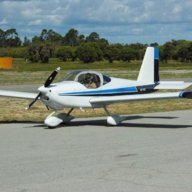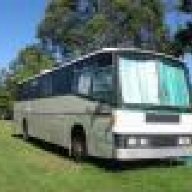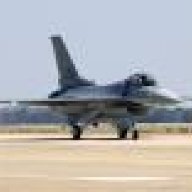-
Posts
1,752 -
Joined
-
Last visited
-
Days Won
39
About poteroo
- Birthday 20/09/1940
Information
-
Aircraft
Brumby R610
-
Location
Albany, South Coast, WA
-
Country
Australia
Recent Profile Visitors
poteroo's Achievements

Well-known member (3/3)
-
poteroo, I have a query about the Owen Stanley gap that we used flying due east of POM to Safia then on to Wanigela - Tufi as shown on the attached map. I previously posted that the southern alternative to the Kokoda Gap was called the Pakia Gap but now I remember that the Pakia Gap was actually in the Crown Prince Range on Bougainville Island between Aropa - Arawa and the Panguna Mine. So do you recall the name of the POM - Safia gap that you mentioned in one of your posts? It's driving me crazy.
-

Small plane missing Victoria 18/09/22
poteroo replied to BrendAn's topic in Aircraft Incidents and Accidents
The Ops Manual of the day doesn't spell out - not paragliders? It shouldn't have to - because it clearly is dissimilar to the RAAus type. IMHO, the decision to accept that they are close enough was the ignition point of this whole unfortunate accident. 😕 -
poteroo started following Cootharabah. Glastar into a backyard 12/11/2023 , Small plane missing Victoria 18/09/22 , Papua New Guinea Pilot Needed and 7 others
-

Small plane missing Victoria 18/09/22
poteroo replied to BrendAn's topic in Aircraft Incidents and Accidents
DPP will be looking at the published requirements for transitioning pilots from another RAAO across to RAAus, because the trail of decision making has to start back when the pilot first approached the CFI with his request to obtain a RPC. It appears to me that the initial decision by the CFI was the critical one:which lead to a cascade of weak decisions by those concerned. Looking at the Ops Manual informs me that a paraglider does not meet the requirements for transitioning. SECTION 2.13 5. C. (1) & (3) states clearly that the experience claimed must be 'of the same type and group' as the RAAus operate. A paraglider is non-powered to start with, while the J-230 is in the HP group of RAAus. Let common sense prevail even if the wording could perhaps be more positive. As a CFI, you are often asked about transition requirements, and more often than not, you need to wisely 'discover' that what the proponent seeks is impossible. Sometimes the reaction is volatile, but with age, we should be able to handle that. I think that RAAus needs to spend more time and resources with SIs and CFIs to ensure that there are clear pathways in the sequence of decisions they make. A 'traffic light' approach? These decisions have to be made on the frontline, and not re-directed to managers in Canberra. -
Son, You need nothing less than a C182, Max 3 pob. You need to consider that AVGAS is generally unavailable. You need to understand that hundreds of strips shown on your maps are not being maintained well. Your 'safety' pilot should have held an ' allover' endorsement for all PNG. Security in PNG is medium to high risk. Read up ' Smarttraveller' on the DFAT site. Grow a set like the RHS.
- 1 reply
-
- 1
-

-
Again, I agree with Nev in respect of the regulatory intransigence over the benefits of low level exposure/training. Pilots continue to plunge into IMC weather - despite all the dire warnings and perhaps 2 hrs of IF training (GA), and in the case of RAAus - (SFA!) - but that's ok?? Smart-arsed pilots will continue to defy the LL warnings, and they'll continue to collide with terrain or powerlines etc despite what they are told. But the relevant training could help them survive too. You don't know, what you don't know - and that's ever so true in aviation. Lets get right to it. The aircraft doesn't appreciate to difference between 150 ft and 500 ft. It's a pilot problem, and it's all about poor planning, poor anticipation of weather, and mis-handling of the aircraft under pressure. There's an obvious need for pilots to be upskilled so they really can configure and fly their aircraft at lower speeds, scan and turn using minimum radius numbers, and keep the whole aircraft under control - (speeds,balance,power). I've probably conducted 150 or more LL courses, (mostly in GA), and the majority of beginning pilots exhibit poor power management, poor balance at low speeds, and poor decision making on 1st exposure to <500agl flight. They tend to suffer immediate 'pucker-up of the anal sphincter ' after which the decision making ability is reduced. And that is the reason we all need both good training, plus regular currency.
-

Another Lockheed 12 crash in USA
poteroo replied to pmccarthy's topic in Aircraft Incidents and Accidents
Maize = Corn. In older UK farming pubs I see 'corn ' being used for wheat grain. Differential power is useful with twin tail draggers as you can keep straight without braking on a wheeler. A touch on either brake will indicate if one is weaker than the other but a grabbing brake is hard to recover from. Tailwheel locked only slows the groundloop but an essential check list item nonetheless. (I'm sure that some C185s I've flown did have a t/w lock control on the central area nr the flap lever.). But keeping some power on the upwind engine is useful, especially as the tail is descending toward t/w contact and the airflow is masked from a single fuselage rudder. -
The take-off, even @ MTOW, used to be less of a problem in PNG ops because most strip's had significant slope. 5 - 10% was usual. But, there was a climb limit for most fully loaded aircraft. I think it was about 6% and was shown on our PK charts. It became a worry if you got airborne ok, but then needed to climb to perhaps 4000ft higher to get through a ' gap ' We used a rule of thumb to add 3000ft to our pressure altitude to calculate DA.
-
There have been several wind related upsets on 07 at Bunbury over the years. DPW,(formerly CALM), had a few in their Cubs. One CPL did his C182 an injury that I remember. There's a lot of mechanical turbulence over the trees on the S side and this requires some skilful handling. Hope he makes it, and I hope his accident account serves a solid lesson to all pilots.
-
Did they overshoot or undershoot? Looks to me that they flew quite a long final, which is tempting fate if you are struggling with perhaps a partial loss of power, but still flying a power on profile. I'm a born pessimist, and hangin very close so that a short final can be flown in the glide. But, they all got out, and that's the result we all strive for.
-

'Tennessee fly girl' fatal Beechcraft 7 dec
poteroo replied to danny_galaga's topic in Aircraft Incidents and Accidents
I dislike autopilots, and that places me in the dinosaur category. If I have to learn a new A/P, I try not to read the whole POH and confuse myself : I take it in small bites, eg, set power and manually trim to keep altitude and heading constant. Only then, do I dare turn on one or other function. Perhaps ALT HOLD first, and see whether A/P will hold ALT with small power changes. Then, when I'm happy with that, I'll try HDG, and check whether it will actually hold the manually set HDG, then check it's adjustment. I never touch the VS setting/adjustment until I'm at altitude, and have checked the ON/OFF switch a few times, just in case the VS adjustment develops a mind of it's own. In the case of this US accident - what more can be said? At 400TT the pilot should have had a good working grip on every system and switch in that Debonair. I fear that these types of pilot induced incidents are going to push our regulators into requiring either a signoff in the pilots log for each system in an aircraft, or, require the system to be disabled unless the pilot has demonstrated competency in operating it. Seems that pilots are becoming their ' ówn worst enemy ' by not learning each and every system in the aircraft they fly or hire. -

ATSB report on Cessna 182 crash Qld 29 Aug 2022.
poteroo replied to red750's topic in Aircraft Incidents and Accidents
My particular interest here is not with the legalities of this operation, nor whether any pilot, regardless of LL experience, should be stooging around mountainous terrain in a high performance aircraft when the wx prognosis was poor. It is more about how it appears to have been carried out on the day. The Cessna 182RG was in good order, and everything was serviceable. There was far more fuel onboard than rquired. The CPL /IFR pilot had 12,000 TT, of which all but 1000 was in helicopters. He had 400 in the 182RG. He held LL approval, but only for helicopter. He was current under 90 days rule. What shocked me, was to read on p46 of the ATSB report, that the average speed of this aircraft was recorded as from 120-140kts. During the latter part of the flight it conducted turns of 35-39 degrees AoB. The ATSB belatedly, on p48, mentions 'slowing down ' as a suggestion. Now, I thought it was common knowledge that pilots slowed the aircraft down when forward visibility began to reduce, and especially where LL flight might become a necessity. The POH for this RG182 specifies full fine pitch, 65KIAS and 20 deg flap for Precautionary Flight - which gives plenty of margin over Vs = 54, or Vso = 50. Personally, I'd use 70 and 10 if light, perhaps 70 and 20 if faced with any tight turning. Not only does slower flight allow you more time to manoeuvre around obstacles, but you can do it in a smaller radius turn, at a lower AoB, and with less stress. Everyone also knows that in reduced visibility, refraction of the airborne particles plays a role, and causes the pilot to believe that objects are more distant than they actually are. A bloody good reason to be slower, and more manoeuvreable. The 182 airframe is excellent for slow flight, (trim the b... thing!), and with positive use of power in 30deg/70kt turns, it is around on the proverbial sixpence. (<500m). At high cruising speeds, (eg, 120+), a higher AoB, (40-45 deg) is needed, and the turn radius blows out to 3x that needed for 70kts/20deg. G forces increase, and that does not help pilot wellbeing or thinking ahead. One of the problems with faster IAS below cloud layers is that just the slightest back pressure can cause a 100-200ft climb straight into the murk - and then you cannot see ahead. It just isn't sensible to be blasting along at 2x your preferred low level operating speed when there is marginal visibility. At 70KIAS, it takes 2.6 mins to cover the 3nm vis that you should have, but at 120KIAS - that reduces to 1.5 mins. If you can't see 3nm, then you should be turning already. That extra minute could be worth your skin. Now, we're discussing a real accident here, and I hope this post isn't taken as criticism of the pilot. I wasn't there on the day, so I don't know what really happened. But, for those of us flying RAAus aircraft - the principles remain the same. Carry lots of fuel, slow down from 100 to 60 - your aircraft won't fall out of the sky unless you misconfigure or hamhandle it. Keep out of the cloud base, make early turn decisions, and, keep your backdoor open with your entry track easily regained if needed. -
Do you mean as in more violent wx events due to ' climate change '? If I remember correctly this strip is uphill several degrees to the west - which would require your go round to be initiated earlier? Most pvt strip's only have a single windsock, often lost to sight on short final. Makes it hard to detect a late wind change. RLOC strikes again!
-
Nothing beats manual flaps for gaining lift quickly, especially if trying to make minimum radius turns. The earlier Cessnas had a 4 position flap lever and on the 180 & 185 this was very reassuring as you kept your eyes outside while extending or retracting flap. Kept you much safer. happy days,
-

no one noticed the plane break up
poteroo replied to BrendAn's topic in Aircraft Incidents and Accidents
Did my early cotton spraying in a Pawnee, and of course in the early 70s they were in good shape. Get a few thousand litres of corrosive spray and solids dust through them, x 20 years, and the corrosion runs wild. In any event, no sane Aggie would do a rolling pull up like that as it really stresses things. -

Leighton Beach WA light aircraft ditched 20.04.2023
poteroo replied to trailer's topic in Aircraft Incidents and Accidents
Well, I thought it was the best example of a water ditching that I have ever seen. I know that the PIC received absolutely the best instruction in this procedure, was very competent, was current, and was cool under pressure. You can't get better than this. bravo,











Mission(RHS).jpg.c8c61d582c5cec0188a010a0a6040dd5.jpg)
.thumb.jpg.aad73043a2f71e4f286928c127dc2a27.jpg)

.thumb.png.a41b13355b64b912b99d82d47637adfa.png)